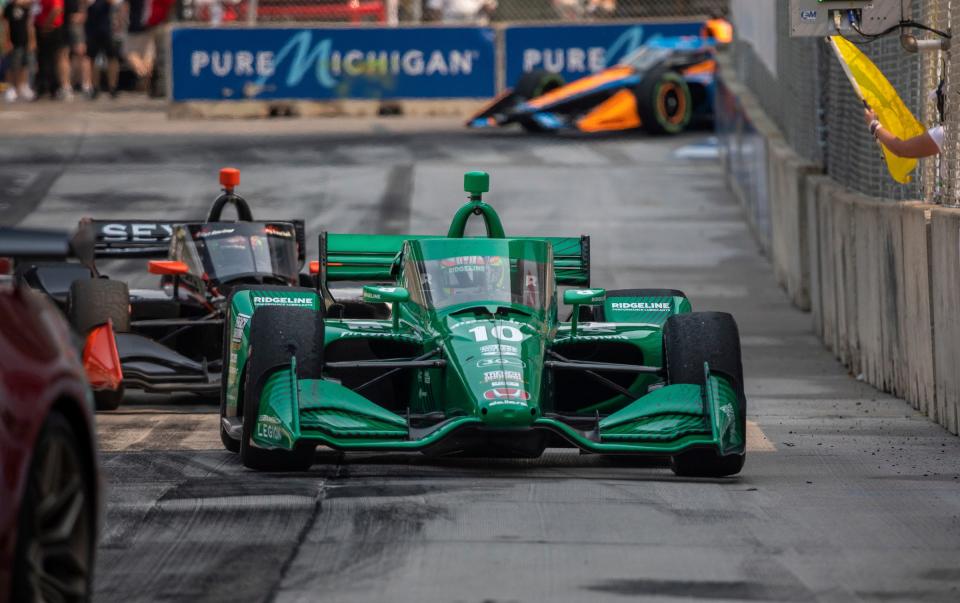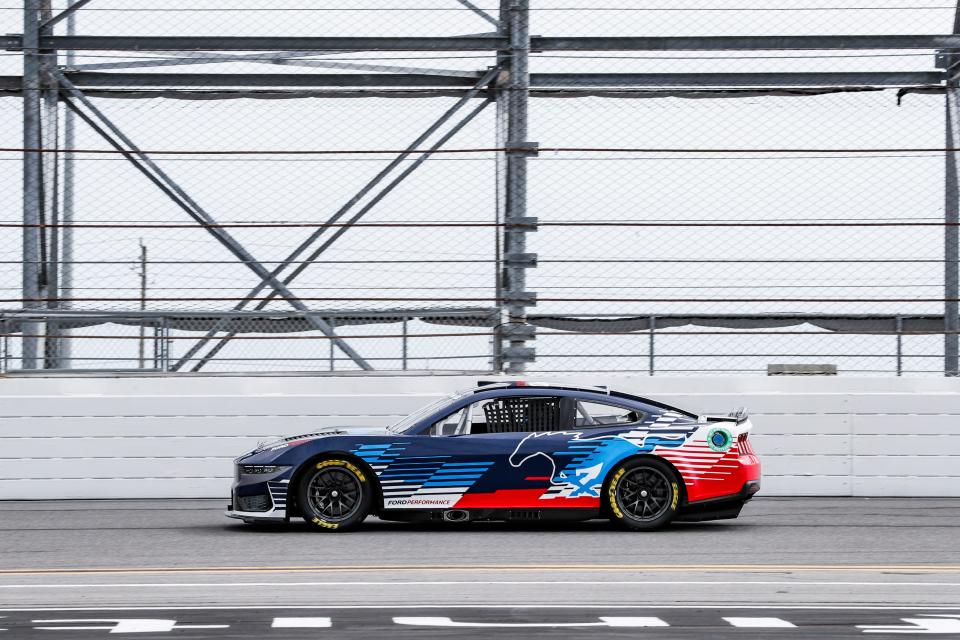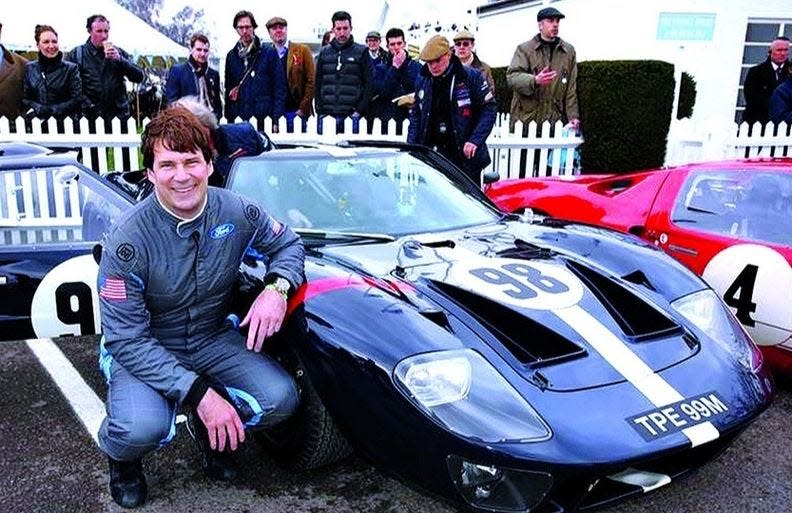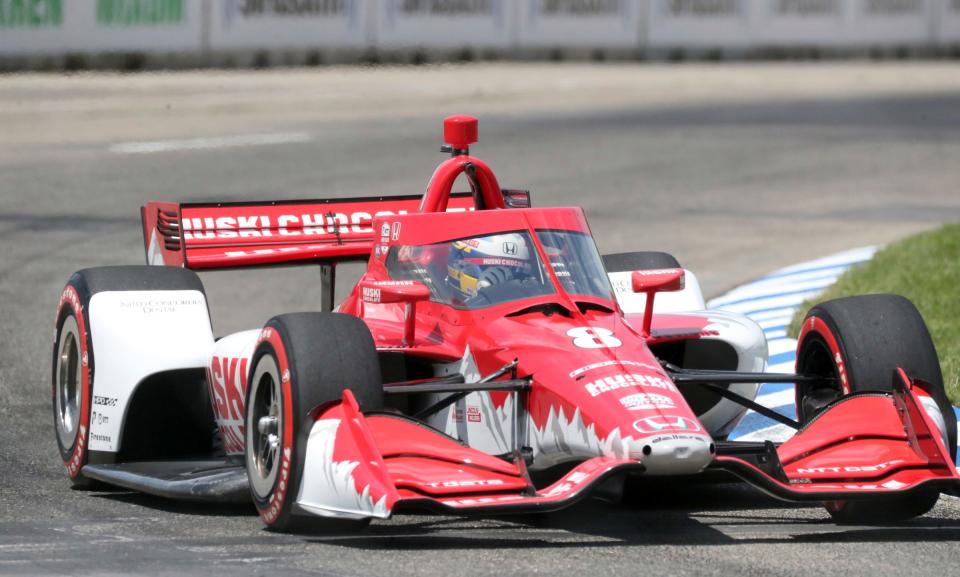Motorsports can help sell you a car: Why carmakers pour millions into racing
When the Great Recession hit in 2008, General Motors quickly put the usual expenses on the chopping block: salaried jobs, vehicle production, marketing costs and the stock dividend. There was one more — which many considered untouchable: motorsports.
That's right. GM looked to end its Chevrolet NASCAR-related spending, estimated at $120 million to $140 million a year, according to a 2008 ABC News report. GM spokesman Kevin Kelly could not confirm whether the company actually made that cut amid its pre-bankruptcy struggles. Like other automakers, GM does not publicly disclose the amount spent on motorsports each year.
The exact return on automakers' investments in racing is murky. But most experts say financial returns are immaterial, especially when an automaker brings in billions in revenue from selling new vehicles.
"Car companies spend money on race cars to enhance the image of the cars they sell us," said Erik Gordon, business professor at the University of Michigan Ross School of Business. "Their SUVs don't even resemble their race cars, but companies hope we believe that if a company can make a race car, it can make a good SUV."

But fast forward to today and the 2024 Chevrolet Detroit Grand Prix, which runs Friday through Sunday in downtown Detroit. The Chevrolet signs everywhere illustrate that GM invests a lot of money in racing. In fact, GM's deepest roots connect to racing. Chevrolet co-founder Louis Chevrolet was a well-known racer who sold out of shares in the company he founded over differences with William Durant, who then gained controlling interest in GM.
GM, Honda, Ford and many European carmakers have made racing a part of their business plan for years. Ford might not exist without it. In 1901, Henry Ford entered a "sweepstakes" race at the 1-mile Grosse Pointe Race Track. As Ford put it, “I never thought anything of racing, but the public refused to consider the automobile in any light other than a fast toy. Therefore ... we had to race.”
Racing for superiority and publicity
He raced to attract investors. Ford defeated famed driver Henry Winton — and 18 months after the race, Ford had the backing to form his car company. Winton himself was a pioneer in using racing to promote his company, Winton Motor Carriage Co. of Cleveland — which folded after being unable to compete with Ford's mass production.
Road races between cities started in the U.S. and Europe even before 1900, and the first speedway was constructed in England in 1906, according to Britannica.
"After the first Grand Prix race in France in 1906 and the first Indianapolis 500 race in 1911, automobile racing was essentially different in Europe and in North America until in the 1950s Grand Prix racing was organized worldwide," Britannica said. In all cases, manufacturers vied for superiority and publicity.
In some cases, the worlds collided, such as depicted in the 2019 movie "Ford v Ferrari," about the Detroit car company's mission to defeat Ferrari in the 24 Hours of Le Mans, culminating with victory in 1966.

But racing likely never was a profitable line item. In the biopic "Ferrari," about company founder Enzo Ferrari, who was once a driver, the flamboyant Italian tells his bean counters who are complaining about costs and urging more production for sales, “Jaguar races only to sell cars. I sell cars only to be racing.”
The reason for racing isn't about the revenue, experts say; it is to perfect technology that can be applied to the cars that the companies sell to the public and to get the public's eyes on their brands.
U-M business professor Gordon said it's impossible to measure how many more cars are sold because a company makes racing cars. The companies just "guess that it works."

"It's like Rolex sponsoring tennis or Slim Jim sponsoring WWE," Gordon said. "They have no idea how many watches or jerkys they sell because of their sponsorships, but they think they sell a lot."
Fighting to get into Formula 1
Detroit Grand Prix weekend features three race series, with the Indy cars racing on Sunday. Of those 27 cars in the field, 12 are Chevrolets, said Todd Christensen, director of Motorsports Marketing for Chevrolet. The rest are Honda. Chevrolet and Ford will also have a big presence in NASCAR this year. An appearance by an automaker's car crossing the finish line carries panache.
"This is a major showcase event, and racing is significant PR for both GM and Ford," said Dan Ives, managing director at Wedbush Securities. "In a world of Mercedes, Ferrari and others in Formula 1, getting the eyes of consumers for GM and Ford are key from a brand awareness perspective. It is becoming more important for GM and Ford to show off their technology and latest technology for the world to see."
Getting in front of fans is so important that on May 21, U.S. Sens. Gary Peters and Debbie Stabenow of Michigan joined a bipartisan group of senators in urging the Department of Justice and the Federal Trade Commission to address the exclusion of the Andretti Formula Racing team, which is partnered with GM, from the Formula 1 Championship series. The senators said it may violate U.S. antitrust laws. If admitted, Team Andretti-Cadillac would have become the first fully American racing team to compete in the Formula 1 Championship Series, and the only team to drive an American-made car utilizing American-made components.
Christensen, who spoke to the Detroit Free Press from trackside at the Indianapolis 500 as Chevrolet was preparing to take part in that race on May 26, said GM is involved in racing because, “It’s all about showcasing our engineering and our Chevy power in those Indy cars. Our founder Louis Chevrolet, he and his brother used to race here at Indy.”
Racing does provide some tech transfer, experts said. The technology that GM engineers develop to help a race car, say, get an extra lap before needing to refuel, might be the same technology that will one day help your car get better fuel economy.
"It’s like a proving ground if you will. Racing moves really fast and allows us to test a lot," Christensen said.
For example, the racing Corvette and the production Z06 Corvette share the same surface elements from the top of the windshield to the rear of the car, according to Chevrolet spokesman Cody Williams. The side air ducts behind doors that cool the rear brakes, engine and transaxle all came from racing. In fact, the racing engine shares 80% of its content with that of the Z06 production engine, Williams said.
Tracking the 'buy rate' of race fans
The final piece is fan engagement, he said.
"Racing is a brand-building exercise. As you, hopefully, do well on track … it positions you as to what people think of you as a manufacturer," Christensen said. "The fans like cars and they buy a lot of cars. We are there showcasing a lot of our latest cars and trucks, educating them and getting them excited and sending them to the showroom."
When GM gets customer leads, the company tracks the buy rate that comes from those racing fans, Christensen said. He said the buy rate of race fans is higher than almost all the other promotional programs GM does.
"There are lots of other sports and properties that we like, but with racing we are the sport. You’re the main attraction when that Chevy is going around the track," Christensen said. "That makes racing different from anything else that we do.”
It is for that reason that many Wall Street analysts are OK with automakers spending millions on what some might see as folly.
"Racing always pushes the envelope with advanced technologies in a high-stress but controlled environment," Mike Ward, managing director of research at Freedom Capital Markets in New York, told the Free Press. "In the past, the engineering benefits have probably outweighed the brand benefits by a wide margin. (GM and Ford) spend $8 billion to $9 billion each annually on research and development. So if they spend $50 million to $100 million on racing and it enables (them) to speed the process of advanced technologies, the benefits far outweigh the costs."
Finding funding for race cars
But to compete in motorsports is expensive, and understanding the finances can be complicated, according to an article on the economics of racing in www.fortloc.com.
The article said the racing industry largely owes its existence to the desire of carmakers to showcase their engineering acumen. It is good advertisement to sell their cars to the public, but to justifiy building the pricey performance cars that are confined to racetracks, manufacturers have to find ways to recover some of the research and development costs.
One of the most popular ways to do that is using "customer teams."
"These are racing teams that purchase the race cars from the manufacturers and run them independently in championships," the article explains. "The teams must secure the funding to compete themselves. However, in some cases, usually where a manufacturer isn't competing against a customer team, the manufacturer can help the customer team out financially."
But the customer teams largely need to pay for their cars, equipment, and racing.
Ford's Farley heads back to Le Mans
At Ford, where CEO Jim Farley is a competitive race car driver himself, it is making racing a notable part of its business model this year. Last fall, Ford Performance unveiled the new Mustang for the 2024 NASCAR Cup Series. It is based on the Mustang Dark Horse and will be eligible to race on six continents.

Mustang has been a fixture in NASCAR since coming to the Xfinity Series full-time in 2011, Ford said. Overall, Mustang has won a driver’s or owner’s championship in nine of 12 seasons in that series and captured manufacturer’s titles in 2011 and 2013, Ford said in a media release.
In a January interview with Yahoo Finance in Autoblog, Farley said Ford races to bring attention to "passion products" like Mustang and Bronco. Also, he believes motorsports is good business, not just for marketing, but that racing itself can be a profitable venture.
“We want racing more and more to inform our production vehicles, not in the past like it affects our suspension geometry (for example). Like we actually want to sell street race cars, lots of them,” Farley told Yahoo Finance.

Farley said he is excited to bring a Mustang back to the Le Mans 24-hour endurance race and beat Porsche and Ferrari "on their turf in Europe, not with a GT prototype or a one-off car, but an American car that someone could buy for 30 grand," adding that Ford is "gonna put everything," into winning that race.
That sounds familiar. Ford will face GM at Le Mans on June 15-16 this year. Christensen said GM will have two Corvettes racing there.
“That’s the most grueling race there is," Christensen said. "Even if you’re extremely fast, doing that for 24 hours is extremely hard. There are a lot of heartbreaks there.”
GM has won its class, the GT Le Mans, nine times, including last year. "So much of what we learn there helps us develop the Corvette," he said.
Honda sees a training ground
But it's not just American carmakers with a drive to compete and win. In a 2016 interview with HuffPost, Marc Sours, senior manager and chief engineer with Honda Performance Development at that time said racing is, "in our DNA. Mr. Honda himself raced, and the company has always viewed racing as an ideal training ground for engineers and designers. Racing teaches teamwork. No single individual can bring success: It's a group effort, and winning is the only standard you're judged by."
He said he's confident racing helps Honda sell Accord sedans and other vehicles to the public.

Best trucks: These are the best small and midsize pickup trucks to buy in 2024
"In 2013, Honda hired a third-party firm to conduct market research at IndyCar races, and the study found there was a positive impact for Honda's involvement with IndyCar racing," Sours said. "Attendees felt that the Honda brand was innovative, on the cutting edge, reputable and dependable. In addition, one out of two people who participated in the race-day marketing activation said the sponsorship of IndyCar increased their intention to test drive a Honda."
How has racing helped Honda improve its cars? Sours said the research and development trickles down into passenger vehicles in, "increased engine performance and durability, fuel economy improvements, chassis and suspension ride, handling and aerodynamics."
So if you head to the Grand Prix, remember as you watch those Chevy and Honda cars take the laps, the car you drive home in might have some of the same technology on it that helped those cars hit 12,000 rpm and max out at 200 mph.
Contact Jamie L. LaReau: jlareau@freepress.com. Follow her on Twitter @jlareauan. Read more on General Motors and sign up for our autos newsletter. Become a subscriber.
This article originally appeared on Detroit Free Press: Why carmakers like GM, Ford have made racing part of their sales plan

 Yahoo Finance
Yahoo Finance